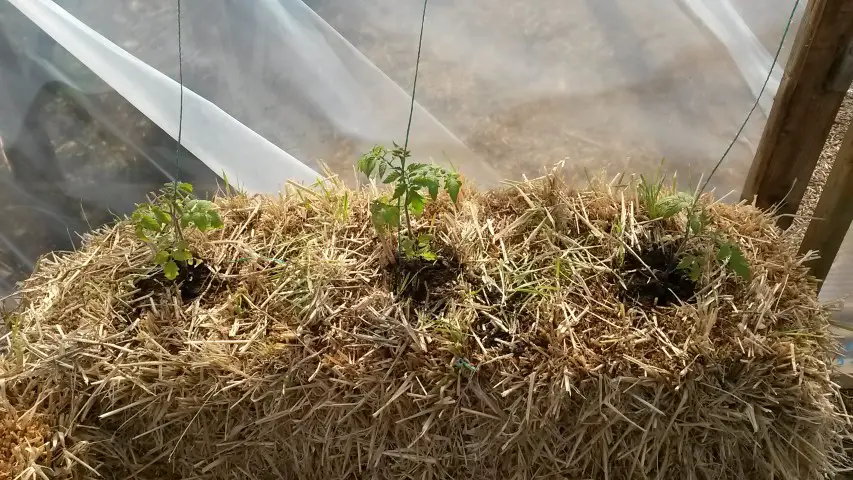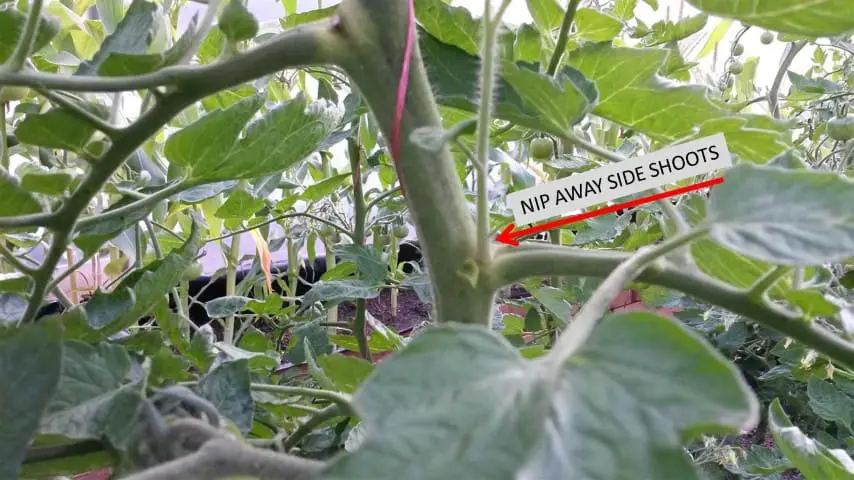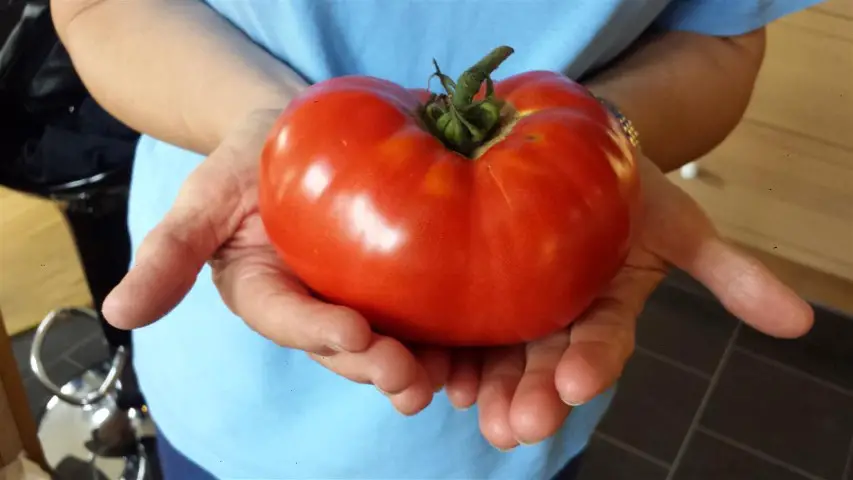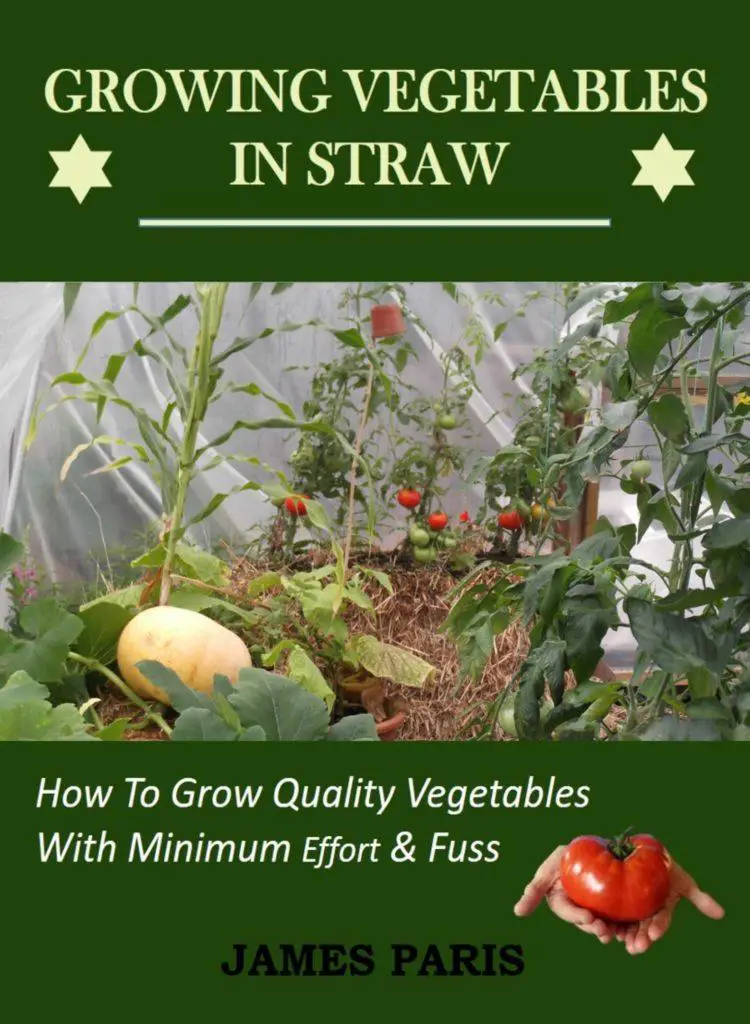Growing tomatoes in bales of straw is a simple affair and something that can be very productive with a minimum of effort – this is the basis of no-dig gardening. Little effort for big rewards!
Before you can grow anything in a straw bale however there is something that has to do done – bale preparation or conditioning.
This is a process where the bale is heavily fed with a rich nitrogen fertilizer for a period of around 3-4 weeks. This causes the bale to heat up considerably before the cooling down and the composting process begins.
More details on straw bale conditioning on this page.
It is at this point that you can start to plant your tomato plants.
How to plant in a straw bale

The procedure for planting in a straw bale after the conditioning process is over is this.
Take a small hand trowel and dig out a hole in the bale about 6 inches in diameter and 8 inches deep. Fill this hole with a good rich compost mix, working it into the insides of the straw as you do so, making sure there is a good ‘foundation’ for your tomato plants to root in.
Do this 3 times for each bale that you intend to plant in, so you will have three tomato plants to each bale of straw.
Water the plants at least every second day, and feed once per week with a good organic plant ‘tea’ to encourage growth as the fruit begins to show on the plants.
Caring for tomatoes
Just like any other plant, tomatoes need a deal of care if you are to get the best results.
Whether you are growing a bush tomato plant which is a type of determinate tomato or indeed a determinate or ‘vine’ tomato, it is essential to stake them for support.
When growing tomatoes in straw bales there are 2 main ways to do this depending on the type of tomato you are growing.
you are growing.
The first is simply to run a cane down through the bale itself. This will give plenty support for the shorter ‘determinate’ tomato.
The second way is to push the stakes through the string along the back-side of the bale and into the ground. This is ideal for the taller indeterminate tomato – especially the heavy beef tomato plants – that can grow over 8 foot tall if you let them
Trimming the plants

Indeterminate tomatoes have a real vigorous growth cycle and they have to be continually trimmed to remove the side shoots that grow between the stem and the leaf of the plant otherwise these suckers will simply draw the energy away from the main load-bearing stem.
The result will be that you will get small fruits, and many not developing at all to turn red.
If you really want to encourage the growth of large tomatoes like the Gigantomo hybrid beef tomato, then you also have to trim away most of the leaves as the plant matures.
This encourages the plant to feed the fruit rather than just growing foliage.
Dwarf or bush tomatoes of the Determinate type on the other hand can actually benefit from a restricted amount of side growth, but again trimming away excess is essential for the health of the plant and the amount of fruit it produces over its lifetime – which is shorter than the vine tomato by maybe 6 weeks or so.
My favourite tomatoes to grow?
Without hesitation I can say that my favourite tomatoes are the indeterminate varieties, and of these I love the ‘sungold’ cherry tomato for its abundant fruit growth and super-tasty orange fruits.
The Gigantomo is my favourite beef tomato with the largest I have grown being almost 2lbs in weight, and a fantastic, tasty tomato fried with some ham and eggs!

So there we have it – growing tomatoes in straw bales is fairly similar to growing them in raised beds or planters.
The main difference is really in preparing the straw bale itself to receive the tomato plants – and this is done in fairly much the same way as you would for growing other vegetables in straw.
Preparation and after-care is the ‘root’ of all successful gardening techniques – and indeed life in general.
Remember “Failing to prepare = preparing to fail”
Now then, time to get out these straw bales and leave them outside ready for conditioning in the Springtime.


